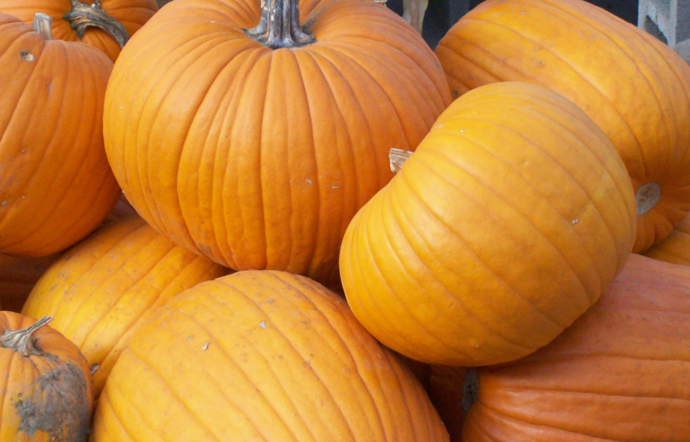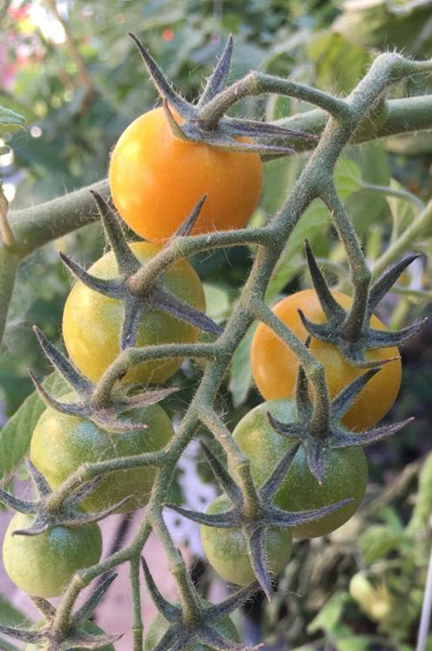| VEGETABLE |
HARVEST |
STORAGE |
| Asparagus |
Harvest the third year after planting. Cut spears at their base when they are 6-8″ tall. If cut too soon, the yield will be less. If cut too late, spears will be large and tough. |
If you must store asparagus, trim the stems and stand them in a glass with a couple of inches of water. Cover with a plastic bag and refrigerate for 2-3 days. |
| Beans |
Harvest before beans become tough and stringy. If you can see the bulge of a bean through the pod, the bean is over mature and the pod is too tough to eat. Pick beans after the morning dew has dried. |
Store unwashed in plastic bags in the vegetable crisper for up to three days. |
| Beets |
Beets can be harvested whenever they reach the desired size. Beet sprouts, including tops, can be eaten raw or roasted. Beets larger than 3″ may become tough and fibrous. |
Leave one inch stem and taproot intact to retain moisture and nutrients. Store unwashed beets in loose or perforated plastic bags in refrigerator. |
| Broccoli |
Cut the central head with 5-6 inches of stem after the head is fully developed, but before it begins to loosen and the individual florets start to open. Removing the central head allows the side shoots to grow for later harvesting. |
Store unwashed in loose or perforated plastic bags in vegetable crisper for 3-5 days. If left unrefrigerated, it will become woody. |
| Brussels Sprouts |
Cut sprouts off the stem when they are firm and about one inch in size. The lower sprouts mature first. Remove the lowest leaves when the sprouts are harvested. Harvest before the leaves turn yellow. |
Brussels sprouts will lose flavor after being harvested. Store unwashed sprouts for only 1-2 days in plastic bags in vegetable crisper. |
| Cabbage |
Harvest anytime after heads form. For best yield, harvest when they are firm, but before they crack and split as exposed leaves becomes unusable. |
Store unwashed, uncut heads in a loose plastic or perforated bag for up to two weeks. |
| Carrots |
Harvest when carrots are at least 1/2-3/4″ in diameter. Harvest before they are overgrown 1-1 ½” in diameter. They will lose flavor and may become woody. Carrots may be left in the ground until a killing frost. Immature carrots, including tops, can be added to salads. |
Trim carrot tops to one inch and store in loose or perforated plastic bags in vegetable crisper. They will keep for several weeks. |
| Cauliflower |
Harvest main head by cutting stems when head is 6-8” in diameter. Mature heads should be compact, firm and white. To keep heads white, tie outer leaves above the heads when they start to get big. Harvest a week or two later. |
Store unwashed in loose or perforated plastic bags in vegetable crisper for 3-5 days. |
| Corn, Sweet |
Sweet corn should be picked when a pierced kernel produces a milky juice. If it is not ripe, the juice will be clear. Other signs to watch for are the silks browning and drying and firmness of unhusked ears. |
Fresh corn needs to be used quickly as it starts to lose its flavor and sweetness. Store in loose or perforated plastic bags and use within 1-2 days. |
| Cucumber |
More than other vegetables, this depends on the variety planted and their designated use – fresh eating or canning. Harvest as the desired size. If they go too long, they will be bitter. Leave a one inch section of stem on the cucumber. |
Store unwashed in loose plastic bag for up to one week. |
| Eggplant |
Harvest when fruit is still glossy. Cut vine with shears or knife rather than breaking stem. Leave some of the stem attached. When fruits become dull or brown, they are too mature for culinary use. Eggplants bruise easily, so harvest gently. |
Eggplants do not like cool temperatures and do not store well. Use immediately for best flavor or they may become bitter. Wrap in plastic for no more than 1-2 days in the refrigerator. |
| Lettuce |
Harvest whenever it is large enough to use. Harvesting every other plant leaves more room for remaining plants to grow. |
Store unwashed in plastic in refrigerator for as few days as possible. |
| Muskmelon |
Harvest when the stem separates easily from the vine. You may actually see it starting to split from the vine. |
Once picked, they will soften, but not sweeten further. Store at room temperature for 2-3 days. |
| Onion |
Harvest after tops of onions wilt naturally. Pull mature onions and allow to cure and dry in well-ventilated are for 2-3 weeks. |
After bulbs dry, cut the tops 1-2 inches long and store in cool, dry, well-ventilated area. |
| Peas, Garden |
Harvest when pods are swollen. Peas on the lower part of the plant mature first. |
Garden peas keep for 2-3 days in the refrigerator. Store unwashed in perforated or loose plastic bags. |
| Peas, Snow |
Harvest when pods have reached full length, but are still flat – about 5-7 days after blossoming. |
Store unwashed peas in plastic bag in refrigerator up to two weeks. |
| Peas, Sugar Snap |
Harvest every 2-3 days as pods start to fatten, but before peas grow too large. |
Store unwashed in perforated or loose plastic bags in refrigerator for up to three days. |
| Peppers, Bell |
Peppers may be harvested at any size desired. Green bells are mature at 3-4 inches long, firm and green. |
Store unwashed bell peppers in a plastic bag in a refrigerator for up to a week. Green bells last a little longer than yellow and red bells. |
| Potatoes |
Early potatoes can be harvested when you see the plants begin to flower. For late potatoes, wait 2 weeks after the foliage begins to die back. |
Store in a cool, dark area with good ventilation. Do not refrigerate potatoes. Potatoes can be stored at room temperature for a week or two. |
Pumpkins |
Press your fingernail into the rind. If moisture appears, fruit should remain on the vine, but pick before a hard freeze. Leave 2-3 inches of stem to prevent rot. |
Leave in warm, dry well-ventilated area for 10 days before placing in storage. Whole unblemished pumpkins can be stored up to six months in cool (45F-50F), dry area. Do not refrigerate. |
| Radishes |
Harvest when young and tender for optimal flavor. Oversize radishes can be tough and woody. All radish greens are edible. |
Remove the tops before storing. Leaves drain moisture and nutrients from the radish during storage. Greens can be stored separately for 2-3 days. Store wrapped radishes in plastic bags for 5-7 days. |
| Spinach |
Harvest when leaves are about an inch wide. Don’t wait too long or bitterness will set in. Leaves can be picked off or the entire plant may be harvested. |
Unwashed leaves will store for 3-4 days loosely packed in a plastic bag in vegetable crisper. Use prewashed leaves within 1-2 days. |
| Squash, Summer
(including Patty Pan, Zucchini, Yellow Crookneck and Scallop) |
Pick on a regular basis when mature, young and tender. |
Store unwashed in refrigerator for use within 3-4 days. |
| Squash, Winter
(including Acorn, Butternut, Hubbard and Spaghetti) |
Press your fingernail into the rind. If moisture appears, fruit should remain on the vine, but pick before a hard freeze. Leave 2-3 inches of stem to prevent rot. |
Winter squash varieties have a long shelf-life and can be stored for up to 3 months in a cool (55F-60F), dry place. |
| Tomatoes

|
The longer you leave it on the plant, the more flavorful they will be. Tomatoes ripen from the inside, so when the outside looks ready, and feels soft, pick it. |
Do not refrigerate. Cold temperatures ruin their flavor. Store stem up, not in direct sunlight, between 55F-75F. Use within 1-3 days of harvest. |
| Watermelon |
Harvest when the light green, curly tendrils on the stem dry, bottom of the melon where it touches the soil turns from light green to yellow |
Keep uncut melons at room temperature for 2-4 days if not fully ripe, then refrigerate for up to 5 days. Store cut melon in a covered container for up to 3 days. |
| Zucchini |
Harvest regular zucchini when they’re about 6-7″ long. Harvest round zucchini when they’re about the size of a cue ball. |
Store unwashed in refrigerator for use within 3-4 days. |


